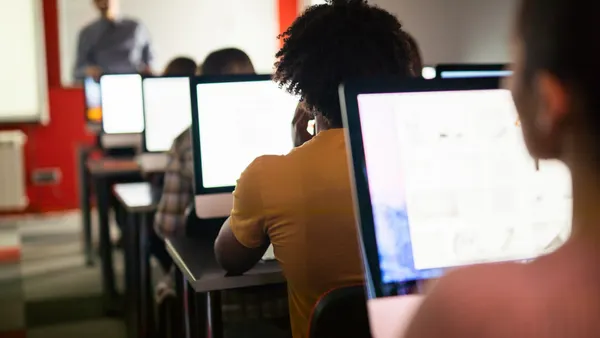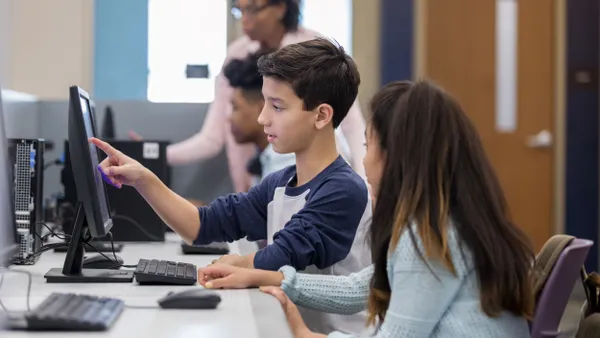Dive Brief:
- The National Assessment of Educational Progress evaluated U.S. students on technology and engineering literacy exclusively in 2014, and the results show that girls in eighth grade scored three points higher than boys overall.
- A 28-point achievement gap also exists between low-income students and those who don't receive free or reduced lunch, and higher-performing students were generally more likely to engage in technology and engineering activities in and out of school.
- Another highlight was that 50% of eighth-graders also reported using a computer for digital media at least once per month in their school.
Dive Insight:
While higher performance among female students is promising, the newest NAEP evaluation again underscores the need for school systems and district administrators to seriously consider how their current structures reinforce a nationwide achievement gap between disadvantaged students and their more affluent peers. Half of African-American students in fifth grade score below NAEP’s basic level, and 47% of Latino and low-income students also don’t meet the bar.
Two studies released last fall found that differences in how students of different races or economic backgrounds perform within the same school may contribute more to the achievement gap than differences between schools. One of those studies, which looked at students’ performance in eighth grade math on the NAEP's Nation's Report Card, found that over 50% of the 31-point achievement gap between black and white students came from differences in performance at the same school.
George Bohrnstedt, an American Institutes for Research fellow who co-authored the NAEP study, discussed possible solutions for closing the gap with Education Week, stating that matching struggling students with the best teachers and providing extra professional development for those educators are among measures needed beyond additional resources to address the policy implications.










